I am often reminded of the Marcus Aurelius quote:
The object of life is not to be on the side of the majority, but to escape finding oneself on the side of the insane.
And so, I am feeling some relief since I made it crystal clear to everyone who reads me at Facebook and this blog, I made it very clear in my last post, that I do not and cannot subscribe to the Peter Ridd, Anthony Watts, Graham Lloyd and Joanne Nova claims of record coral cover at the Great Barrier Reef, CLICK HERE.
Marcus Aurelius was a Roman Emperor who ruled nearly two thousand years ago. He apparently, would begin each day by very consciously being grateful, being grateful to be alive. That is how I feel when I am underwater at the Great Barrier Reef – looking at the corals and the fish, up-close.
It is how I felt last Sunday afternoon on the second dive at Barren Island. What a privilege, I thought, living in a world with so much natural beauty. I am so grateful to be able to access this, to be able to witness this extraordinary beauty.
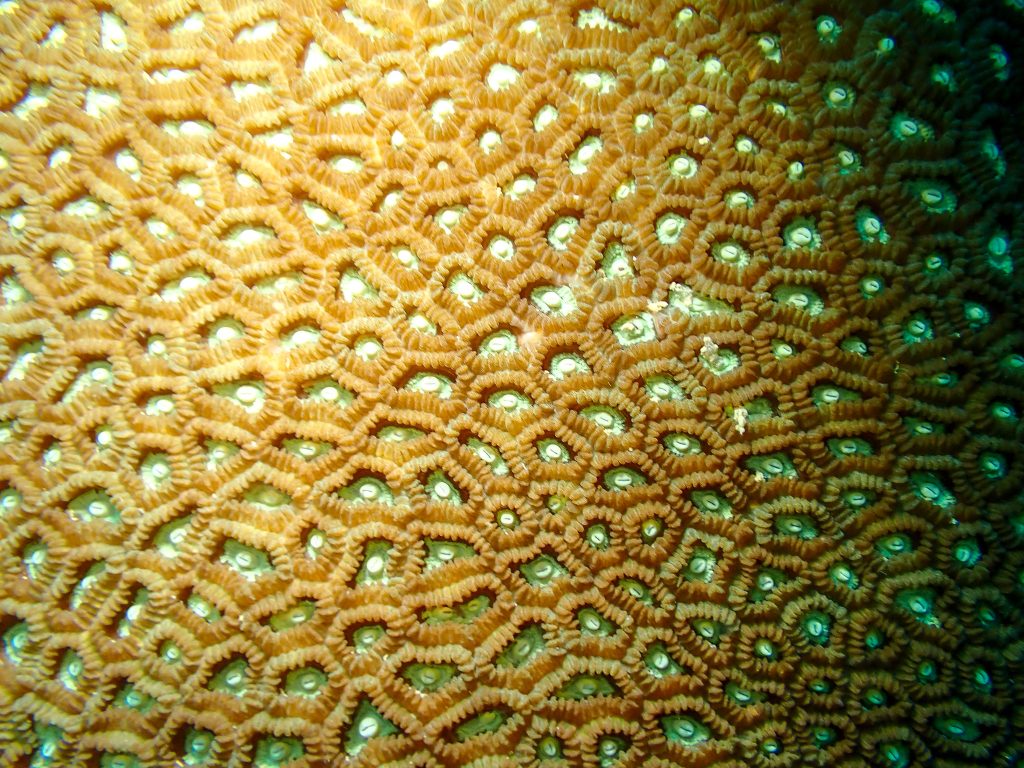
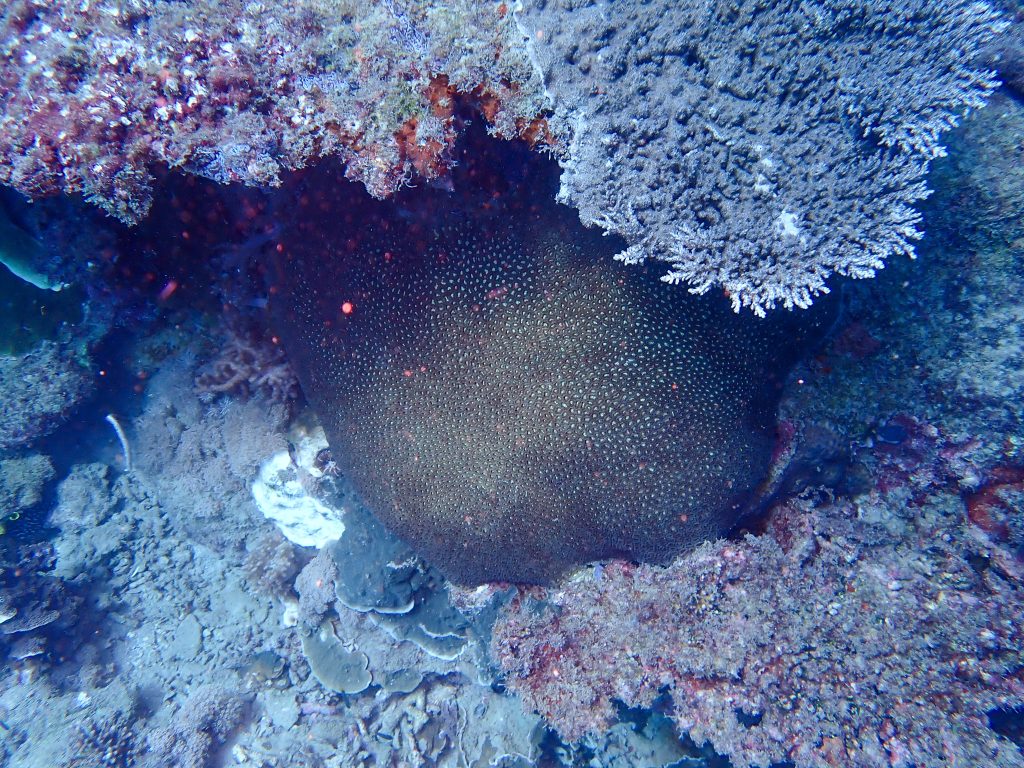
And so, it is not that I think the Great Barrier Reef is ruin – I just know as surely as the fog lifted at my local beach yesterday, that coral cover varies and it is a lie to claim record coral cover this year.
There was much more coral cover 2,000 years ago when sea levels were about 1.5 metres higher, and there was more of it last year before the very real coral bleaching that was widespread at the southern Great Barrier Reef, and before cyclone Jasper that affected the northern reefs, and cyclone Kirrily that impacted the central region.
If we are to ever understand the nature of life, and regeneration and what drives significant change at coral reefs, including changes in the distribution and abundance of coral and fish species, then we need to be better able to monitor changes in coral cover.
Just as sometimes it can be difficult to see across to Great Keppel Island because of the fog, visibility can also vary a lot underwater. So, any proper survey method, whether underwater or aerial, would need to consider this, and not just the setting on the camera. An accurate report of total coral cover would also include the different habitats at most coral reefs, including the reef crest. At the moment, for the last forty years, the Australian Institute of Marine Science in-water surveys used to report on total coral cover at the Great Barrier Reef, they have only been of the reef perimeters. I explained all of this in my last blog post.
On Sunday afternoon, just last weekend, visibility was perhaps 8 metres at the coral reef fringing Barren Island. The coral is down 10 metres. From the surface it is impossible to know that the coral is even there. The sea was just a beautiful blue, and it appeared so deep. It wouldn’t matter what setting I had on my camera, from above the waves, whether at the surface or 150 metres in the air, I would not be able to see the extraordinary beauty that is Barren Island Reef.
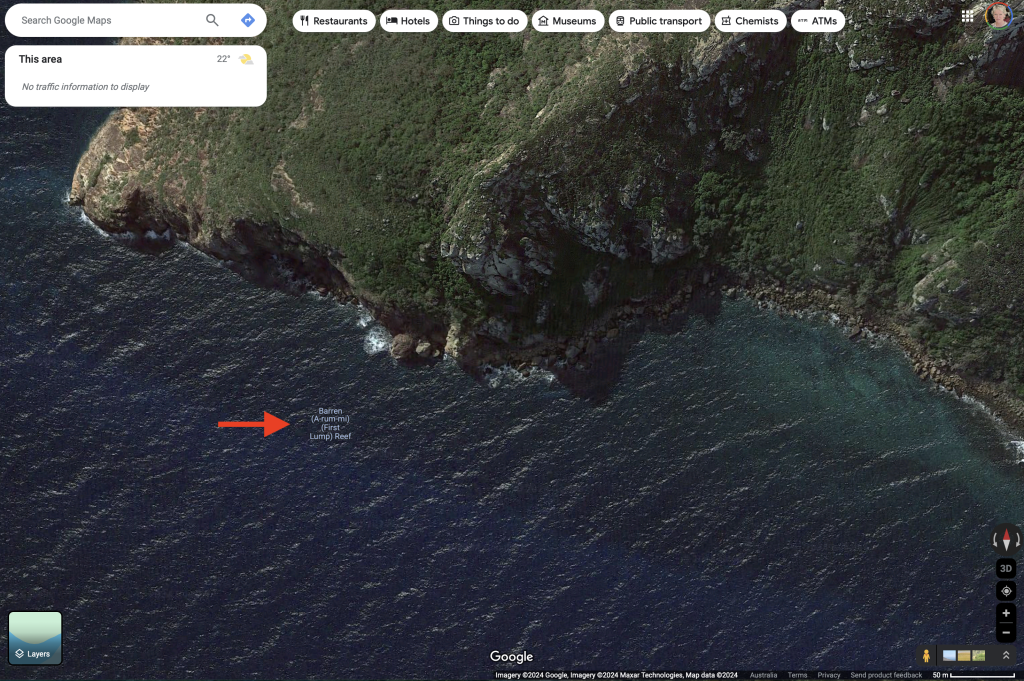
After I stepped-off the boat just on midday and let all the air out of my buoyancy control device (BCD) and started to sink down to the bottom I saw so many corals.
I have a photograph of the large Porites sp. From a distance it was a haze of blue – to know that it was healthy I needed to get up-close. Then I could see that it was very much alive. I could see the individual corallites and that they were intact.
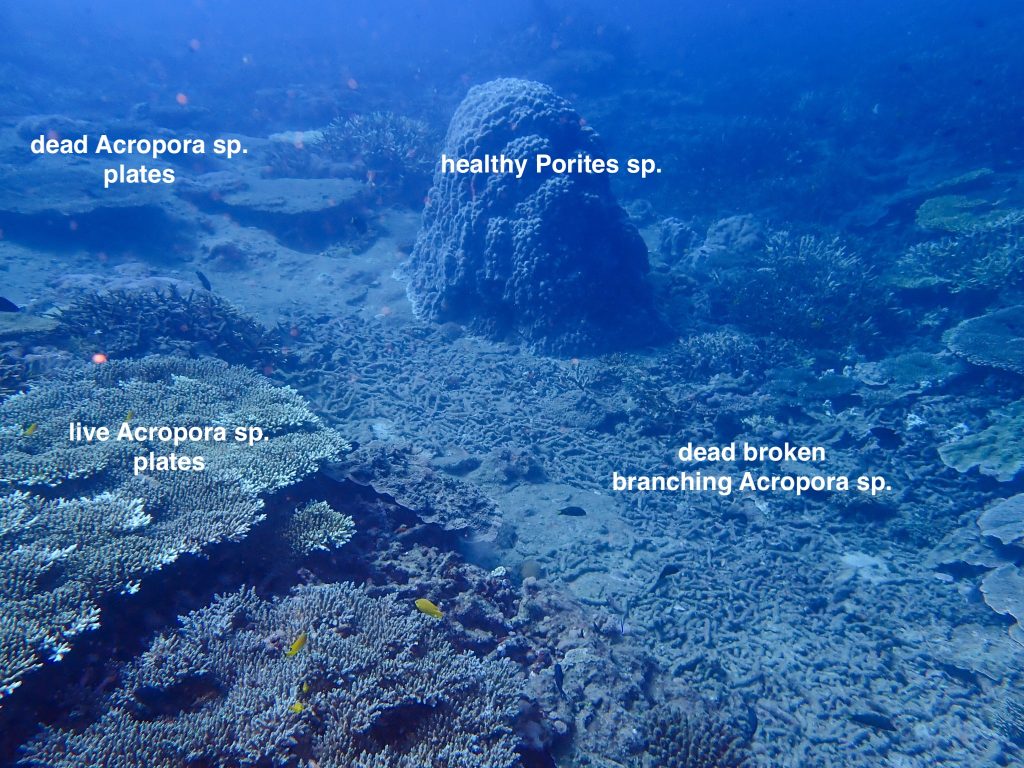

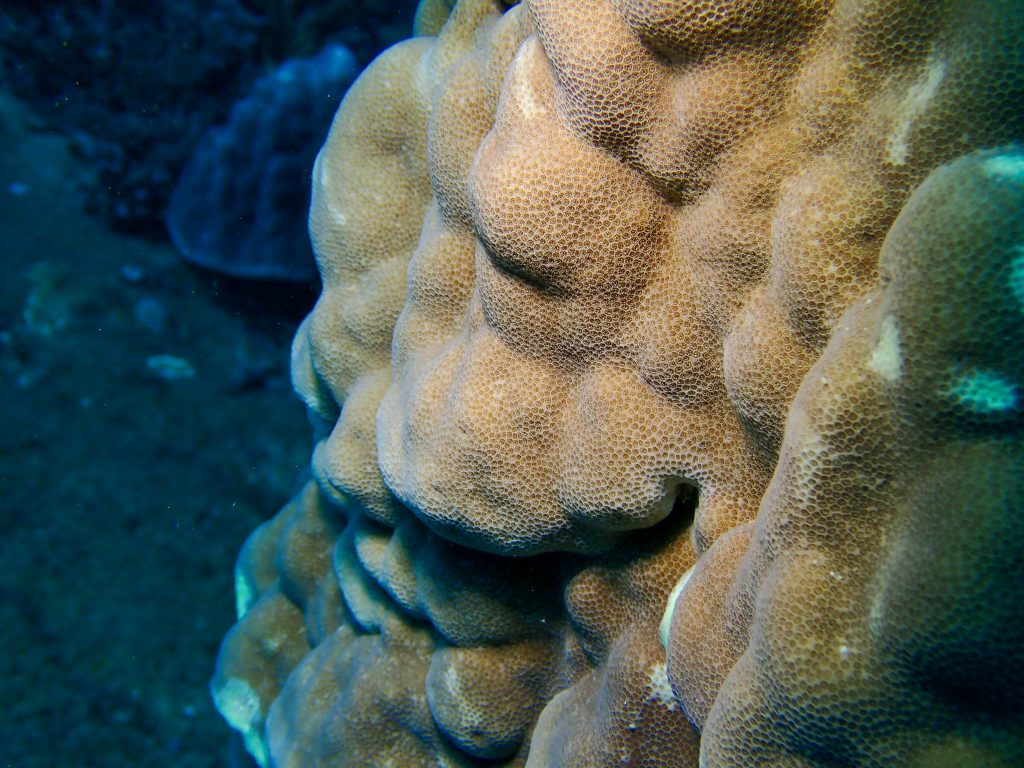
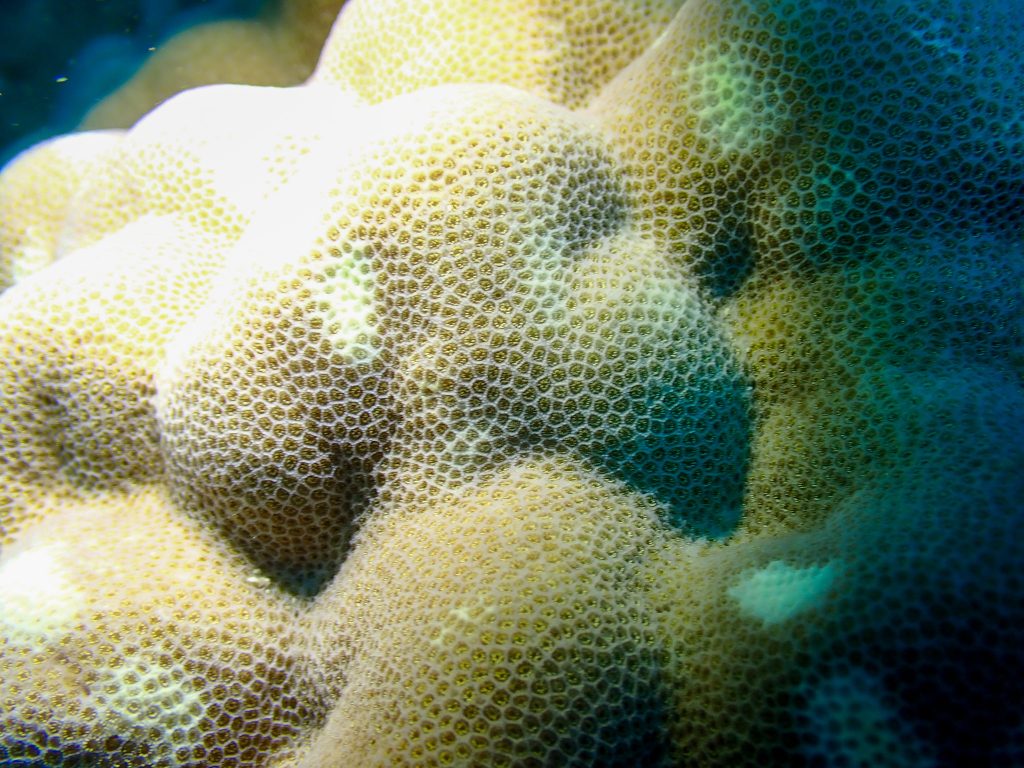
*****
Part 1 of this series is here:
https://jennifermarohasy.com/2024/07/seeing-barren-island-corals-and-fish-part-1/

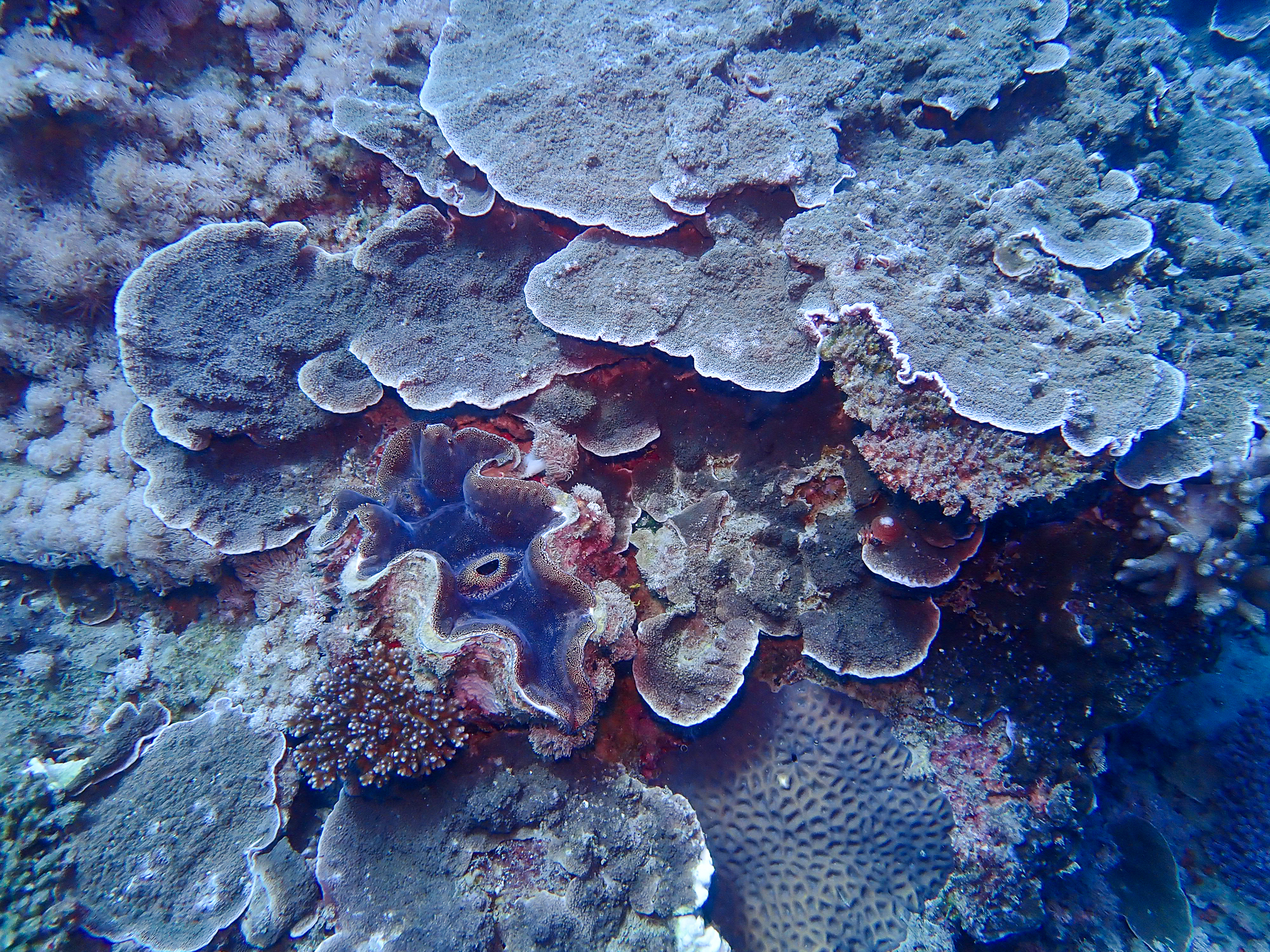
 Jennifer Marohasy BSc PhD is a critical thinker with expertise in the scientific method.
Jennifer Marohasy BSc PhD is a critical thinker with expertise in the scientific method.

Rigorous surveys, data collection, and publication in peer reviewed journals is the way to understanding the declining state of the Great Barrier Reef.
Karen,
Rather than surveying for ‘decline’ in the ‘Great Barrier Reef’, it would be more scientific to survey to understand ‘change’. This could be change in the distribution and also change in the abundance of particular coral species and particular fish species.
If the survey method was ‘rigorous’ then we would know if there was a decline in the state of corals and/or fishes at the Great Barrier Reef.
‘Rigorous’ is a good word. But there is no evidence to suggest the current AIMS survey method for determining even one aspect of this coral cover is at all rigorous. Indeed as I have explained in a recent blog post:
“It is purportedly the intension of The Australian Institute of Marine Science (AIMS), specifically their Long Term Monitoring program, to detect changes in reef communities at a number of different scales including at the scale of the individual reef, sub-region and between the northern, central and southern Great Barrier Reef.
But. If this monitoring is not even able to detect the extraordinary damage inflicted by Tropical Cyclone Kirrily on John Brewer Reef it cannot be considered fit for purpose.
To reiterate, John Brewer reef as an ecosystem was approaching climax, in all its beauty, when it was smashed by TC Kirrily early this year, on 25th January 2024.
This severe category three cyclone sat for two long hours over the top of this spectacular mid-shelf reef unleashing such destruction and yet the AIMS’s monitoring program has no record of it. According to their monitoring program there is nothing to see, they are in denial of this cyclone. …
There is more information at the blog post here: https://jennifermarohasy.com/2024/06/monitoring-to-avoid-cyclone-damage-denial-part-3/
It would appear your ‘peers’ are incompetent.
I’m confused. Are you saying that, going for a swim and taking a few photos, with an underwater camera, over a cherry-picked reef, while wearing rose-coloured goggles is a scientific survey comparable with AIMS? Who is funding your, “work”?
*****
Hi Karen,
I was using some of the details from my dive on Sunday to draw attention to some of the issues that might need to be considered when undertaking surveys of coral cover be they in-water or aerial. You, and others, have previously indicated that you favour aerial surveys.
I am more generally interested in getting people, particularly Queenslanders, to think about the conflicting messages including the bizarre results from the recent AIMS in-water survey of John Brewer Reef.
My diving last weekend was self-funded, as is this website that has been going since 2005. The idea for this website and this blog was Graham Young’s the editor of OnlineOpinion.com.au and I used to write for that publication.
Thanks so much for your questions and interest.
Cheers, Jennifer
Corals are an ancient life form that have survived the hot Eocene and glacial periods. The current interglacial is more of the same for them. Goreball warming is fear porn to panic the susceptible TV watchers.
Hi Jennifer. Great pics and explanation as usual. Your regular “rigorous” survey of the reefs, ie diving at depths and viewing the corals up close, with camera, and exploring different reef habitats, including reef crests and perimeters, provides real science-based evidence of changes to the reef, including recovery after cyclone damage or bleaching episodes. Apparently many of your colleagues do not understand that aerial surveys of the reef perimeter, and peer reviewed articles based on such aquired evidence, cannot meet the same standards of scientific integrity as you provide.
Jenn, are you saying you are not paid as Senior Fellow with responsibilities for Climate Change in the Research Program at the right wing think tank IPA?
****
Thanks Karen,
I have been the editor of the last two ‘Climate Change the Facts’ books, funded by the IPA. That is very well know. I wrote a very long introduction to the last book, that you may be interested to read, link here:
https://climatechangethefacts.org.au/introduction/
And you will see that in all my many publications in peer-reviewed journal on climate change, that I acknowledge funding from the B. Macfie Family Foundation. That foundation has been very supportive of me, and also of Peter Ridd in his campaign through to the High Court for freedom of speech.
I am also the founder and director of the Climate Lab Pty Ltd, and through that company I have done work for the Indonesian Bureau of Meteorology (BMKG) funded through the Queensland University of Technology (QUT).
Are you saying that what I write here is influenced by the QUT?
This weblog is independent of those roles. And not funded by them.
Cheers, Jennifer
I agree with your reaction to Karen’s use of the term “decline” since it infers judgement has been made. You have identified aspects of the reef where AIMS surveying has been superficial. It is arrogant for a body such as AIMS to ignore your findings; surely this should initiate a response from them … with a view to changing their survey technique
… this applies especially to them not recognising the damage done to the John Brewer reef by TC Kirrili?